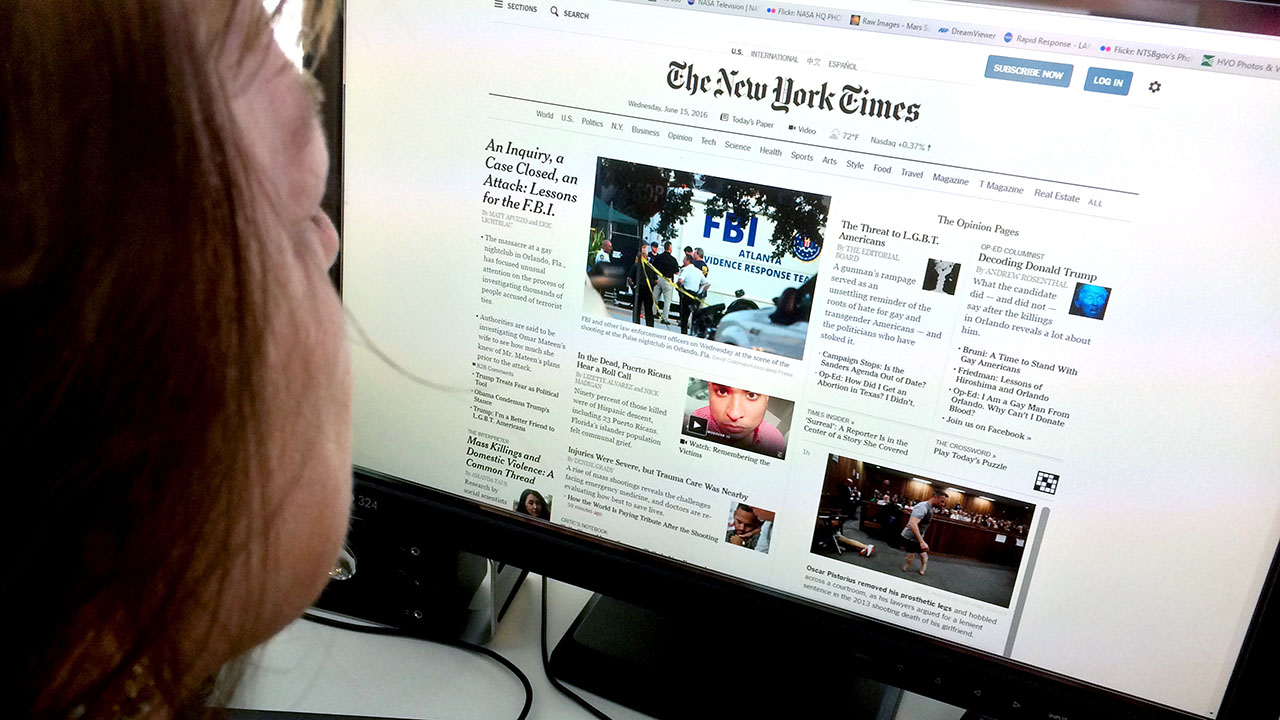DW News Special Reports on Environmental and Climate Concerns
Wiki Article
The Development of Journalism in the Age of Information Online
In the quickly altering landscape of journalism, the digital age has actually ushered in a brand-new age where the immediacy of on the internet information reshapes both its production and usage. The rise of person journalists and independent voices better complicates the narrative, contributing to a dynamic yet precarious media environment.
Increase of Digital Information Operatings Systems
The rise of electronic information systems has actually basically changed the landscape of journalism, marking a change from conventional print media to vibrant, on the internet spaces. This development was moved by improvements in innovation and the increasing ease of access of the internet, which allowed information to be distributed swiftly and generally. Unlike their print counterparts, digital platforms can instantaneously update material, giving real-time information coverage and evaluation that interest the modern visitor's need for immediacy and significance.Digital platforms have additionally broadened the scope of journalism, allowing a diversity of perspectives and voices. With lower barriers to entrance, independent reporters and smaller information companies can get to international target markets, testing the monopoly when held by developed media empires. This democratization of news has improved the public discussion, supplying varied stories and dealing with specific niche interests that were previously underserved.
Moreover, the assimilation of multimedia aspects such as video, sound, and interactive graphics improves storytelling, making information much more interesting and easily accessible (dw news). This multimedia come close to not just attracts a more comprehensive audience but additionally aids in the comprehension of complicated stories. In essence, digital platforms have actually redefined journalism, fostering innovation and adaptability in an ever-evolving media environment

Effect of Social Network
Social media platforms have further reinvented journalism by modifying how news is consumed and shared. Additionally, social media has broadened audiences, granting journalists access to global viewership past geographical restraints.
The interactive nature of social media sites cultivates interaction, permitting audiences to take part in conversations, share point of views, and add to information stories. This communication enhances the dynamic between journalists and their audiences, advertising a more participatory kind of journalism. Nevertheless, this also positions tremendous stress on journalists to create content that reverberates with target markets, usually prioritizing sensationalism to record attention.
Furthermore, social media platforms have ended up being vital tools for reporters to resource stories, assess public viewpoint, and network with market peers. The reliance on social media additionally requires an essential analysis of sources to ensure the credibility of info shared.
Challenges of Misinformation
In the middle of the digital revolution of journalism, one considerable challenge is the pervasive spread of false information. In an era where information is abundant and rapidly available, comparing trustworthy news and produced web content has actually become progressively tough. The large volume of information disseminated across various on the internet systems frequently obscures the line in between reality and fiction, presenting a considerable risk to the stability of journalism.Misinformation can spread quickly via social media, where formulas prioritize involvement over accuracy, accidentally magnifying incorrect narratives (dw news). This not just threatens public trust in media establishments yet also fosters an environment where misleading content can affect popular opinion and decision-making procedures. The obstacle for reporters is twofold: to debunk fallacies effectively and to promote extensive criteria of fact-checking and confirmation
More complicating this issue is the presence of deepfakes and advanced disinformation campaigns that utilize progressed modern technologies to create misleading material identical from reputable coverage. As these innovations progress, so need to the devices and strategies utilized by journalists to combat them. Resolving misinformation needs cooperation between media organizations, innovation business, and policymakers to create extensive strategies that safeguard the credibility of info in the electronic age.
Function of Citizen Journalists
Browsing the landscape of misinformation highlights the transformative influence of person reporters within the digital realm. As traditional media outlets come to grips with the sheer rate and quantity of news circulation online, citizen reporters-- normal people armed with smart devices and accessibility to social networks-- are playing a progressively crucial role. These grassroots factors have come to be instrumental in covering events swiftly, often providing real-time updates from the ground before mainstream media can react.Citizen reporters have equalized news reporting, magnifying voices that may or else continue to be unheard. By leveraging systems like Twitter, Facebook, and Instagram, they provide varied viewpoints that challenge the stories regularly pushed by developed media. This democratization, nonetheless, additionally offers challenges. The lack of formal training or content oversight can cause the spread of unproven info, making complex efforts to identify fact from fiction.
However, citizen journalism is improving the media landscape, engaging traditional image source outlets to adjust by incorporating user-generated content into their reporting. By cultivating area interaction and encouraging participatory journalism, these digital storytellers add to a more comprehensive and dynamic news ecosystem. As person journalists remain to develop, their duty in forming public discourse remains a necessary part of modern-day journalism.

Future of Journalistic Stability
The expansion of digital platforms has actually equalized info dissemination, allowing a bigger range of voices to add to the information landscape. This has actually likewise led to the spread of false information and the erosion of trust fund in media.The increase of artificial intelligence and algorithm-driven content curation additionally makes complex the landscape. While AI can boost reporting by evaluating large datasets and identifying fads, it additionally postures threats of bias and manipulation. Journalists need to therefore stay alert, making sure that innovation functions as a tool for truth as opposed to distortion.
Moreover, the financial pressures on traditional media electrical outlets require innovative company models to sustain top quality journalism. Subscription-based versions, nonprofit financing, and collaborations with tech firms are becoming prospective remedies. Yet, they must be pursued without jeopardizing editorial self-reliance.
Eventually, the future of journalistic stability depends upon the dedication of journalists and media companies to maintain transparency, liability, and a steadfast commitment to reality, in the middle of a quickly transforming digital world.
Learn More Here
Final Thought
The evolution of journalism in the digital age provides both possibilities and difficulties. The increase of electronic information platforms and social media sites has equalized information circulation, encouraging a diverse variety of voices, consisting of resident journalists. Nonetheless, these advancements demand attentive efforts to deal with misinformation and maintain journalistic honesty. The future of journalism pivots on the capability to adapt innovative organization designs that sustain top quality reporting while preserving the trustworthiness and count on crucial for informed public discourse.The surge of digital news platforms has actually basically transformed the landscape of journalism, marking a change from conventional print media to dynamic, on the internet rooms. With lower obstacles to entry, independent reporters and smaller sized information companies can get to international target markets, testing the monopoly when held by developed media corporations.Social media platforms have actually better changed journalism by modifying just how news is consumed and shared. As typical media outlets grapple with the large rate and volume of information dissemination online, person journalists-- ordinary individuals look at this website armed with mobile phones and access to social media-- are playing an increasingly critical role. The surge of electronic information systems and social media has democratized details circulation, equipping a diverse array of voices, including resident journalists.
Report this wiki page